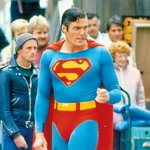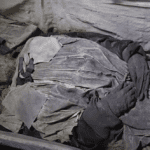 Music
Music  Music
Music  History
History 10 Less Than Jolly Events That Occurred on December 25
 Weird Stuff
Weird Stuff 10 Funny Ways That Researchers Overthink Christmas
 Politics
Politics 10 Political Scandals That Sent Crowds Into the Streets
 Weird Stuff
Weird Stuff Ten Bizarre Facts About The Doge Meme
 Our World
Our World 10 Ways Your Christmas Tree Is More Lit Than You Think
 Movies and TV
Movies and TV The 10 Coolest Stars to Set Sail on The Love Boat
 History
History 10 Things You Didn’t Know About the American National Anthem
 Technology
Technology Top 10 Everyday Tech Buzzwords That Hide a Darker Past
 Humans
Humans 10 Everyday Human Behaviors That Are Actually Survival Instincts
 Music
Music 10 Surprising Origin Stories of Your Favorite Holiday Songs
 History
History 10 Less Than Jolly Events That Occurred on December 25
 Weird Stuff
Weird Stuff 10 Funny Ways That Researchers Overthink Christmas
Who's Behind Listverse?

Jamie Frater
Head Editor
Jamie founded Listverse due to an insatiable desire to share fascinating, obscure, and bizarre facts. He has been a guest speaker on numerous national radio and television stations and is a five time published author.
More About Us Politics
Politics 10 Political Scandals That Sent Crowds Into the Streets
 Weird Stuff
Weird Stuff Ten Bizarre Facts About The Doge Meme
 Our World
Our World 10 Ways Your Christmas Tree Is More Lit Than You Think
 Movies and TV
Movies and TV The 10 Coolest Stars to Set Sail on The Love Boat
 History
History 10 Things You Didn’t Know About the American National Anthem
 Technology
Technology Top 10 Everyday Tech Buzzwords That Hide a Darker Past
 Humans
Humans 10 Everyday Human Behaviors That Are Actually Survival Instincts
10 Untold Stories Behind Iconic Images
They say a picture is worth a thousand words. In some cases, that might actually be an understatement. The following are some of the most iconic images ever, permanently ingrained in our culture, and they have a few interesting stories to tell.
10The Roaring Lion
Yousuf Karsh
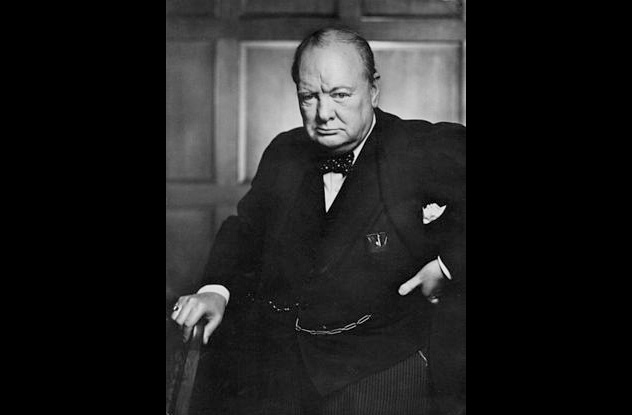
Not many people will know that the title of this photograph is The Roaring Lion, but most of them will still recognize it. It is one of the most iconic images of Churchill and one of the most reproduced photos ever. It shows a steely-eyed leader in a time of crisis. No time for fun and games—just determination to overcome one of the greatest threats to mankind. In reality, though, Churchill was just annoyed the photographer took away his cigar.
The moment took place on December 30, 1941. Churchill was touring the United States and Canada to discuss the war and had just given a speech to the House of Commons in Ottawa. He entered a room, brandy in one hand, cigar in the other, when he saw a photographer setting up lights. That man was Yousuf Karsh, famed portrait photographer, who saw an annoyed Churchill and realized he had not been told of the photo shoot. Even so, the prime minister granted him two minutes. He put aside the brandy but refused to relinquish his cigar.
A defeated Karsh went back to his camera and set up the shot. Just before taking it, he sneaked up to Churchill, asked for forgiveness, and plucked the cigar from his lips. The result was a pissed-off prime minister and one of the most iconic shots in history.
9Columbus’s Portrait
Sebastiano Del Piombo

If you are trying to conjure up an image of Christopher Columbus, chances are that you are thinking of the image above. It is the most well-known painting of Columbus, done by Venetian master Sebastiano del Piombo. The only problem is that we can’t say for sure that is what Columbus actually looked like. We’re not even sure that really is meant to be Columbus.
The inscription on the painting reads “the Ligurian Colombo, the first to enter by ship into the world of the Antipodes 1519.” While that might sound like Columbus, the date suggests that the painting was done 13 years after he died, which suggests that del Piombo painted it from descriptions. But the inscription was likely added long after the painting was completed, so the painting might not be of Columbus at all.
There is actually no definitive portrait of Columbus. While there is a legend that Queen Isabella ordered a portrait of Columbus while he was at her court, no such painting was ever found. Despite being so well known today, Columbus was considered a failure at that time for not delivering on his promise of vast riches, so it’s possible that his portrait, if it existed, was destroyed or painted over.
We, at least, have a few reliable descriptions of the admiral from trustworthy sources like his son Ferdinand and historian/acquaintance Bartolome de las Casas. In total, around 70 paintings purported to show Columbus have been gathered over the years, and none of them could be certified as authentic.
8Lennon/Yoko Rolling Stone Cover
Annie Leibovitz

As a pop culture magazine, Rolling Stone has never been afraid to generate a bit of controversy, especially with its covers. This image of a naked John Lennon draped over Yoko Ono was one of its most controversial (and most successful) covers ever.
The shoot happened on December 8, 1980. The photo was taken by famed portrait photographer Annie Leibovitz, who is responsible for some of the most iconic pop culture images in history. One story says that, though Lennon was quick to strip, Ono felt uncomfortable and wanted to remain clothed. Another said that Ono was willing to take her top off, but Leibovitz thought it would make a better photo if she had her clothes on.
Whatever the truth might be, Leibovitz only took one picture. She showed it to Lennon, who was ecstatic with the result, proclaiming that it “captured [their] relationship exactly” and insisted that it would be the cover of the magazine. Everyone parted ways, happy with how the photo shoot turned out. Just five hours later, John Lennon was pronounced dead after being shot by Mark David Chapman, making that the last photograph of the former Beatle.
7People Reading Stock Exchange
Norman Rockwell

American painter Norman Rockwell was one of the most prolific artists in history, creating over 4,000 works of art during his lifetime. He worked as a cover illustrator for The Saturday Evening Post for five decades, providing a new cover for each issue. Rockwell’s broad appeal came from depicting average people engaged in everyday activities. One such cover was called People Reading Stock Exchange. As you would imagine, it depicted four people (and a dog) reading the stock exchange.
At first, everything seems normal about the painting. At second glance, there’s something off about the grocery boy—he appears to have three legs. The boy is bending over forward, hands on his knees. However, while his right hand is shown resting on his bent right knee, there is another straight leg behind it.
People have offered various explanations for the painting. Some said that it’s merely an illusion, and the grocery boy is just wiping his hand on his apron, while others suggested that Rockwell left some kind of phallic Easter egg in his painting. However, the painter himself later admitted that it was just a simple mistake.
6Netherlandish Proverbs
Pieter Bruegel The Elder
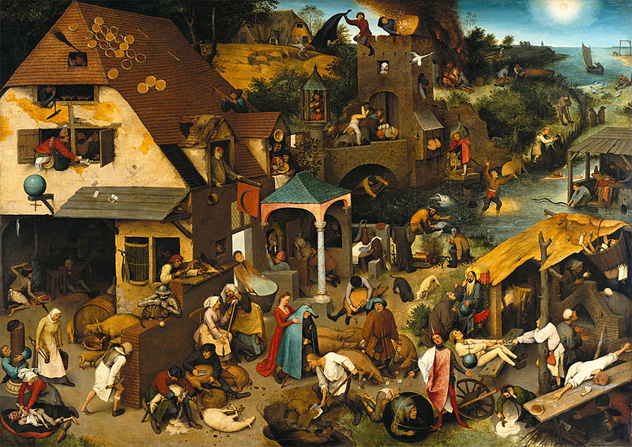
Many artists like their work to have an open interpretation so that they convey a different meaning to each viewer. That wasn’t the case with 16th-century Dutch painter Pieter Bruegel the Elder. He was literal, as evidenced by one of his most famous paintings—Netherlandish Proverbs. Painted in 1559, this image depicts a village scene loaded with humans engaged in various activities. What they are actually doing is providing literal illustrations for Dutch proverbs and idioms.
Many of these phrases are not in use anymore or are unknown outside of the Netherlands. However, there are also idioms still popular today. “Banging your head against the wall” is featured in the lower left corner. “Armed to the teeth” is next to him. Above them you have the “world turned upside-down.”
You can see how many phrases you can identify, but take your time—there are over 110 proverbs and idioms hiding in the painting. Just one image can illustrate multiple sayings. For example, near the upper right corner, two butts point out a window. That alone has three meanings. “Hanging like a privy over a ditch” means that something is obvious. The hand pointing through the hole means “Anybody can see through an oak plank if there is a hole in it”—or, in modern terms, “Thanks a lot, Captain Obvious.” And the third expression, which should make a comeback: “They crap through the same hole” means they’re BFFs.
5Teddy Roosevelt On A Moose
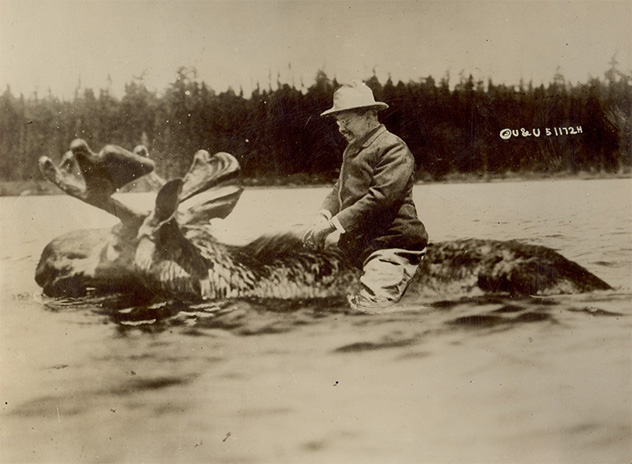
Teddy Roosevelt has often been hailed not only as one of the greatest American presidents but also one of the manliest. He cultivated a rugged, outdoorsman persona that is still quite popular today. Teddy did this with numerous pictures that showed his wild adventures—images where he is at one with nature (or shooting it in the face). The picture above has long been touted as Teddy Roosevelt at his manliest. But recently, it has been discovered that it is, in fact, a well-done fake.
Unhappy with the Republican Party, Roosevelt broke off in 1912 and formed his own Progressive Party with the bull moose as its logo. He used this party to run for a third term against Republican candidate William Howard Taft and Democratic candidate Woodrow Wilson. The image of Roosevelt riding the moose came from an edition of the New York Tribune published before election. It showed all three candidates on their respective party animals—Taft on an elephant and Wilson on a donkey. Both of those were obvious fakes, but apparently Teddy riding a moose through a river was plausible enough that people bought it for 100 years.
4People Playing Tennis On The Wings Of A Biplane
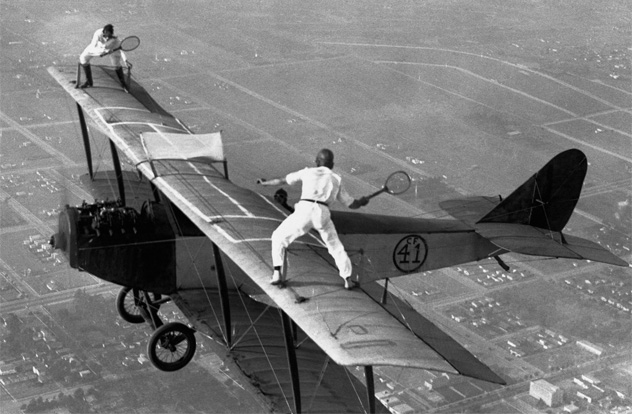
Even though it’s instantly recognizable, this picture doesn’t have a name. It was taken in 1925 and features a biplane in flight with two people engaging in a friendly game of tennis on its wings. At the time, it wasn’t really expected to become so iconic, but the image ended up being the symbol of the barnstormers.
The practice just started becoming popular in the ‘20s. A man named Ormer Locklear popularized extreme airplane stunts, particularly wing-walking. He had gotten used to it during World War I, when Locklear would get out of the cockpit of his plane and onto the wings to fix mechanical issues.
The two people in the picture were Gladys Roy and Ivan Unger. While barely remembered today, Roy was one of the most popular barnstormers of her day. She was known for coming up with new extreme stunts as the crowds grew tired of seeing the same ol’ death-defying feat over and over again. Among her most notable stunts were walking from one wing to another blindfolded and dancing the Charleston on top of the plane.
In the image above, Roy and Unger were pretending to play tennis simply to pose for a postcard. Nobody realized the impact the picture would have. Unfortunately for Gladys, she didn’t really get to enjoy her fame. She died two years later when, due to inattention, she walked into a spinning propeller.
3Portrait Of Adele Bloch-Bauer I
Gustav Klimt
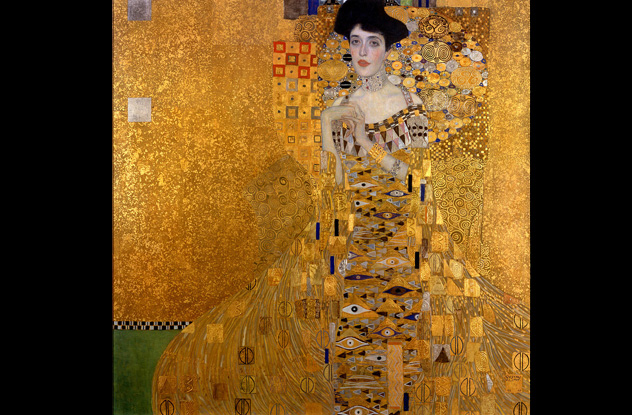
Austrian symbolist Gustav Klimt painted this in 1907 along with another portrait of Adele Bloch-Bauer at the behest of her husband, industrialist Ferdinand Bloch-Bauer. Ferdinand was also one of Klimt’s main supporters. For most of the last century, the painting has been at the center of a long and controversial battle for ownership.
The Bloch-Bauers had five Klimt paintings. Mrs. Bloch-Bauer wanted them all to go the Vienna gallery after their deaths. She died in 1925, and Ferdinand lived 20 more years. However, in 1938, Nazi Germany annexed Austria and promptly confiscated the Klimt paintings, while Bloch-Bauer escaped to Zurich. In 1941, the Nazis sold the paintings to the Austrian state gallery. When Bloch-Bauer died, he wanted the paintings to go to his heirs.
When it was time to return the goods stolen by the Nazis, the Austrian government decided to keep the paintings. This prompted a long court battle between the government and the Bloch-Bauer heirs over ownership. Each side had its own compelling arguments. The Austrian government argued that they’d bought the paintings legally(ish) and that Mrs. Bloch-Bauer bequeathed them to their gallery anyway. The heirs argued that Mr. Bloch-Bauer was the owner of the paintings when they were stolen by Nazis, and he wanted them to have them. The matter was finally settled in 2006, when the courts ruled in the heirs’ favor. The portrait went on to fetch a then-record $135 million at auction.
2Portrait Of Dr. Gachet
Vincent Van Gogh
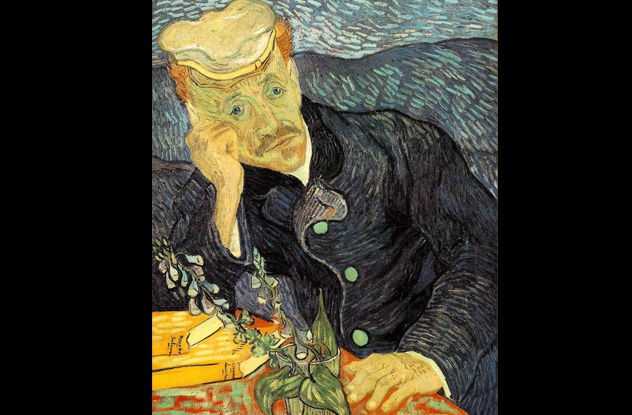
Paul Gachet was a 19th-century doctor to the stars. A physician with a successful practice in Paris, Gachet had an affinity for treating artists, including Cezanne, Manet, Renoir, and Pissarro.
Gachet also treated Vincent van Gogh. He did this in the months leading to Van Gogh’s suicide, so it has been debated how useful the doctor really was. Letters of Van Gogh to his brother, Theo, said that Gachet was useless, as he was even sicker than his patient. Regardless, Gachet stayed with Van Gogh and even posed for two portraits. One of the portraits has a bland history—it stayed in the Gachet family until it was bequeathed to the French government. It has been accused of being a fake, though, perhaps even painted by the doctor himself.
The more famous portrait spent a few decades in the Stadel Museum in Frankfurt until it was confiscated in 1937 by the Nazis. Herman Goering sold the painting to a banker, who, in turn, sold it to collector Siegfried Kramarsky. Siegfried brought it with him to America, and it remained in the family until 1990, when it was sold for a record price of $82.5 million. It went to a Japanese businessman, who caused quite a stir when he announced he wanted to take the painting with him when he died. Since his death in 1996, the whereabouts of the painting are a mystery. Barring unofficial sightings, we don’t know who owns one of the most valuable paintings in history.
1Pale Blue Dot
Voyager 1

Voyager 1 launched in 1977, undertaking a mission that is still going on today. The space probe is the farthest man-made object from Earth at a distance of over 130 AU. However, its initial mission ended just a few years after Voyager was launched. The primary goal was to do flybys of Jupiter and Saturn, take a few pictures, and study the planets. After it provided us with a treasure trove of information about our solar system, Voyager kept on trucking. Right now, the probe is traveling at about 17 kilometers (10 mi) per second, headed for the Oort Cloud, which it will reach in 300 years or so (and traverse in another 30,000).
In 1990, Voyager 1 was about 40 AU or 6 billion kilometers away from us. At the insistence of Carl Sagan, who was part of the Voyager team, the probe was scheduled to turn around and photograph a mosaic of our solar system known as the Family Portrait. It contained 60 individual frames, showing six planets. Once Voyager recorded the images, it slowly sent them over the next three months. Despite traveling at the speed of light, each signal took 5.5 hours to reach us.
Out of the 60 frames, one of them showed our tiny, little planet. Named the Pale Blue Dot, the image had 640,000 pixels, and we were smaller than 1 pixel (we’re in the middle of the brown light band). Sagan based an entire exceptional book around this picture, pondering how one image showed us our real place in the universe.
Radu is a history/science buff with an interest in all things bizarre and obscure. Share the knowledge on Twitter, or check out his website.

